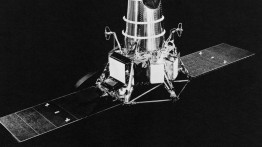Israel Taback ME'43

After graduating from The Cooper Union in 1943 with a degree in mechanical engineering, Israel Taback (1920-2008) pursued a career in aeronautics taking a position with the Langley Aeronautical Laboratory of the National Advisory Committee of Aeronautics (NACA) in Virginia. His talent was recognized almost as soon as he arrived: he was quickly named head of the local instrument calibration lab, then in 1949, he became head of a team that designed flight instruments. NACA, as it turned out, was an excellent place for a young man with endless curiosity and passion about the physics of flight and space travel, for Langley eventually became a key research center of NASA. “I was lucky enough to have gotten into airplanes when we were just coming out of the subsonic range,” Taback told an interviewer in 2008. “We built all the D airplanes, the experimental airplanes. The last one I did, which was the X-15, finally got to be supersonic. In fact, it went up to Mach 6, which was unusual at the time. Since then, everybody flies supersonically.”
Hailed for his engineering genius, Taback played a central role in many of the United States’ most important space-travel missions. Most notably, he worked as Spacecraft Manager for the lunar orbiter programs, the first space-related project at Langley. Later, he became Deputy Program Manager for the Viking Program.
“I was Spacecraft Manager on Lunar Orbiter, and we put five spacecraft around the Moon, all of them successful. We photographed all the Apollo sites. We photographed the full Moon. In fact, I went to Prague with a map of the Moon sometime in the late ‘60s, and people were really excited about having all that detailed information about our next-door neighbor, and it was an interesting time. I enjoyed that enormously.”
During that interview—part of an oral history project at NASA—Taback reflected on the kind of technology available to engineers working on space exploration. “When we flew Lunar Orbiter, we had no computers. The spacecraft was commanded by a sequencer. In other words, it went through a prefixed program and did all the things it was supposed to. When we did Viking we had a computer on board, and we were very proud of the fact that it had 25,000 words.” The information gleaned from the lunar orbiter missions helped inform the choice of landing sites for the Apollo missions, manned spaceflights to the moon.
After retiring from NASA, he joined Bionetics Corporation and continued to work for many years as an aerospace consultant. He received a number of specials awards and honors including the NASA Exceptional Scientific Achievement Medal, the NASA Exceptional Service Medal and the NASA Outstanding Leadership Medal.
Near the end of the interview, Taback noted that much of his career had been dedicated to finding life forms on other planets. “I guess we will for a long time, won't we?” he said. “Do you suppose there's intelligent life on Earth?”
Photo: Lunar Orbiter, Ranger VII, NASA/JPL-Caltech




